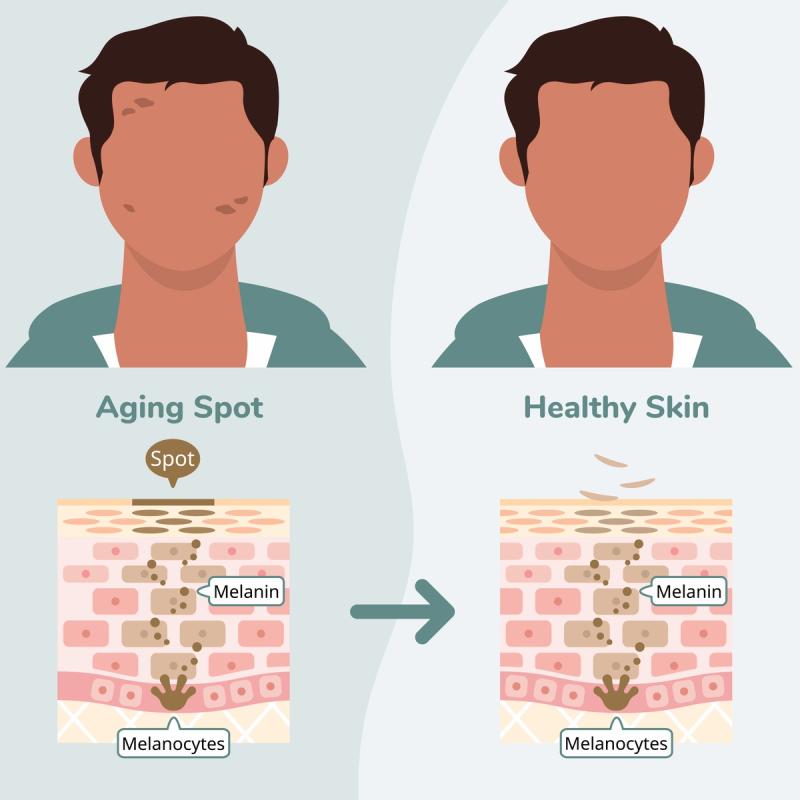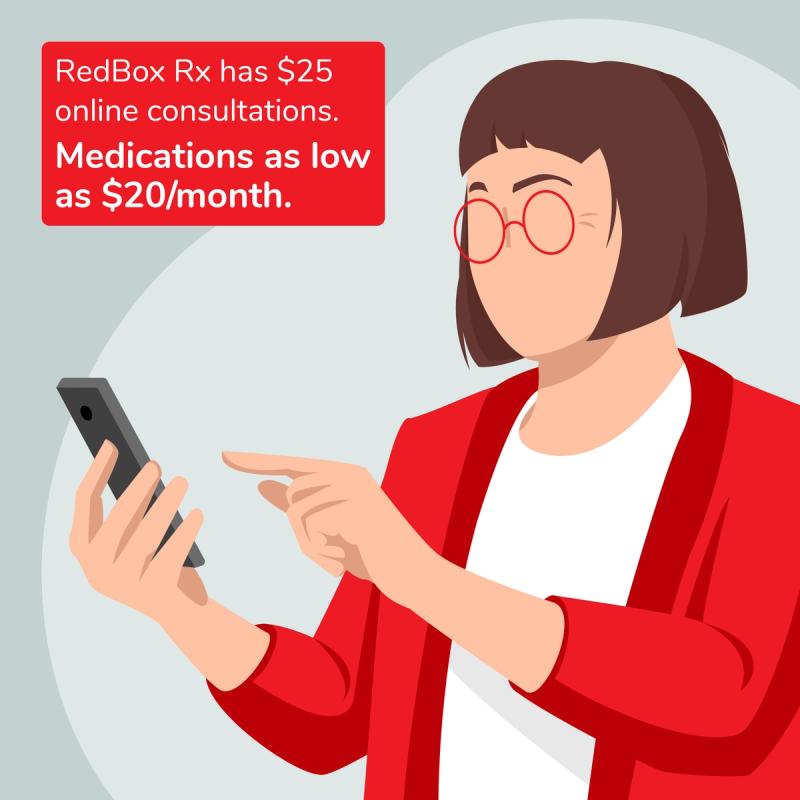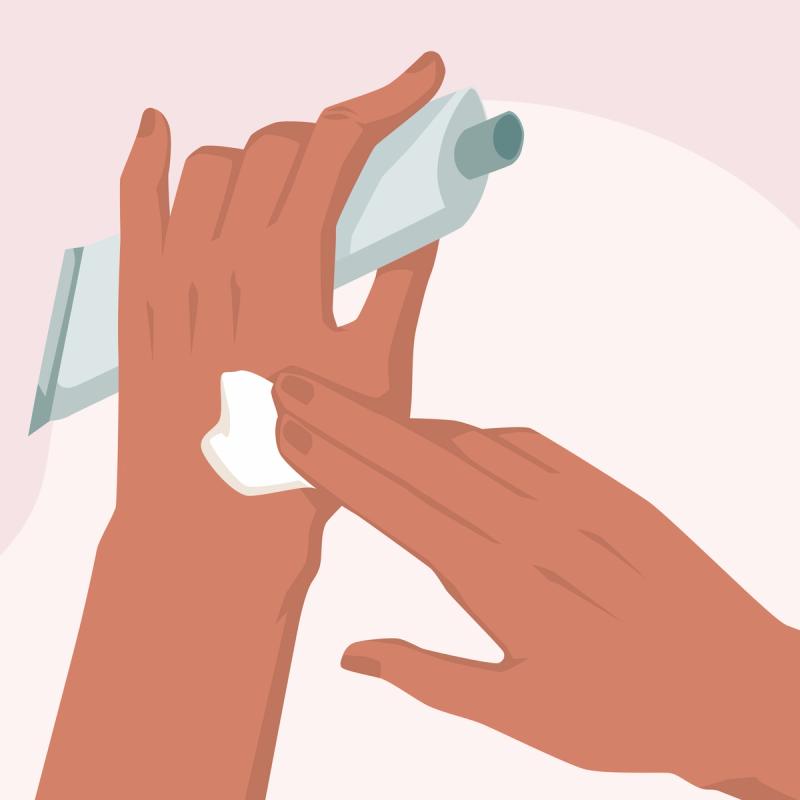Medical professionals have long trusted tretinoin (Retin-A®) and hydroquinone for their remarkable ability to improve common skin issues. But what sets these two treatments apart? Can they be used together? And what about their side effects?
Explore an in-depth overview of tretinoin and hydroquinone’s benefits, differences and how RedBox Rx can make these prescription skin treatments for anti-aging or melasma easily accessible and affordable.
Key Takeaways
Tretinoin (Retin‑A®) is a vitamin A–based prescription that speeds up skin cell turnover to fade fine lines, wrinkles and uneven skin tone over time. It is one of the most studied and effective options for photoaging.
Hydroquinone is a topical skin lightening agent that works by slowing melanin production. It is commonly prescribed for melasma, age spots and discoloration.
Tretinoin and hydroquinone are sometimes prescribed together, especially when both acne and hyperpigmentation are present, but they can also be used separately depending on your skincare goals.
A licensed provider can help determine which medication is right for your skin type and concerns, taking into account your history, sensitivity and treatment priorities.
What is tretinoin (Retin-A®) cream?

Tretinoin (Retin-A®) cream is a topical skin treatment that reduces signs of aging like wrinkles, fine lines, and discoloration caused by sun damage.1 Tretinoin works by speeding up the skin cell turnover process to promote the growth of new, healthy skin. It belongs to a classification of drugs called retinoids.2
Tretinoin cream comes in doses of 0.025%, 0.05%, 0.1% strength. In the case of RedBox Rx, each 45-gram tube of tretinoin cream lasts three months on average. Discuss with your medical provider which strength is best for your skin.
For more than 40 years, the FDA has approved tretinoin as a skin treatment, with many clinical studies showing its effectiveness in reducing sun damage and other signs of aging. However, the dermatology community continues to study tretinoin’s potential in treating other conditions, including regenerating collagen in the skin.3
What is hydroquinone cream?

Hydroquinone cream is a common treatment for hyperpigmentation of the skin caused by the sun or inflammation like melasma, acne, freckles, and more. It works by inhibiting the synthesis of melanin, the element responsible for the pigment in skin.4
Hydroquinone cream is available in a 4% strength by prescription only.5 In a study on melasma, a skin-darkening condition caused by the sun, 70% of users reported a reduction in pigmentation when applied twice weekly for three months.6
What’s the difference between tretinoin and hydroquinone?
Tretinoin and hydroquinone are effective topical skin treatments that can improve signs of aging. Tretinoin helps speed up the cell renewal process to uncover newer, healthier skin, while hydroquinone inhibits melanin production that can cause dark spots.
Tretinoin vs. Hydroquinone Comparison Chart

Can tretinoin and hydroquinone be used together?
Tretinoin and hydroquinone can be used together, particularly in cases of moderate to severe melasma or darkening of the skin.7 Using tretinoin and hydroquinone has been clinically shown to significantly improve hyperpigmentation, skin texture, sallowness, wrinkling, and skin clarity.8 Talk to your medical provider to see if combining tretinoin and hydroquinone could suit you.

Clinically proven anti-aging prescriptions for less.
Consult online with a skin specialist for just $25, available 7 days/week. Get anti-aging prescriptions for $20/month.
Get StartedWhat are the side effects of tretinoin and hydroquinone?
While tretinoin and hydroquinone have proven to be quite effective, each treatment has some risk of side effects.
Side effects of tretinoin include:9
Burning
Stinging
Redness
Dryness
Side effects of hydroquinone include:10
Burning
Stinging
Redness
Dryness
Are tretinoin and hydroquinone available over the counter?
Tretinoin is unavailable over the counter and requires a prescription from a licensed medical professional.11
Hydroquinone 4% cream is also available by prescription only.12
How RedBox Rx can help

RedBox Rx makes receiving anti-aging or melasma treatment easy and affordable.
Benefits of RedBox Rx include:
Transparent, affordable, flat rates for medications starting at $20/month.
$25 consultation with a U.S. licensed medical professional.
No insurance required. FSA and HSA eligible.
No office wait times or scheduling issues typical with physical medical practices.
FREE shipping directly to you. One-time, monthly and quarterly subscriptions available.
Get started on your journey towards better skin with our anti-aging assessment.


